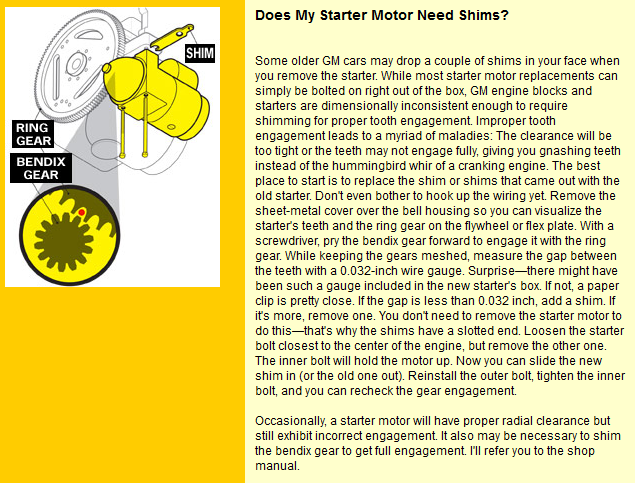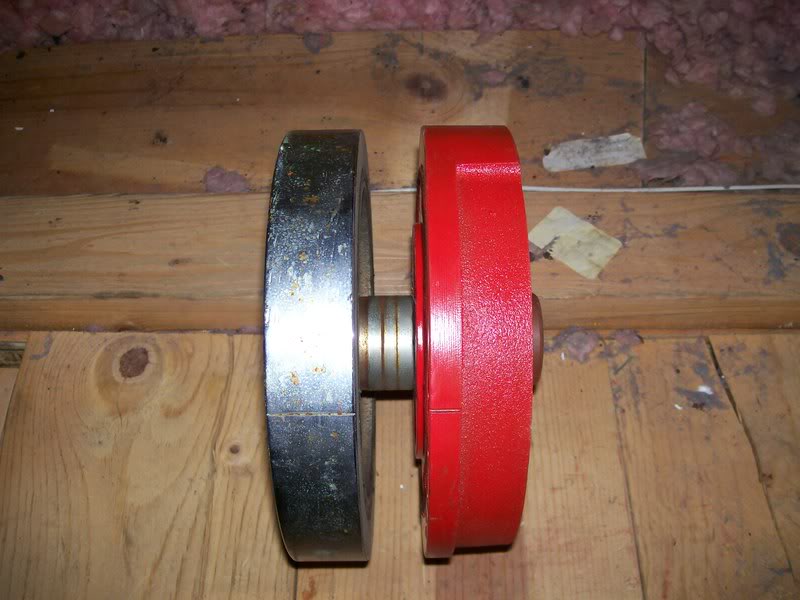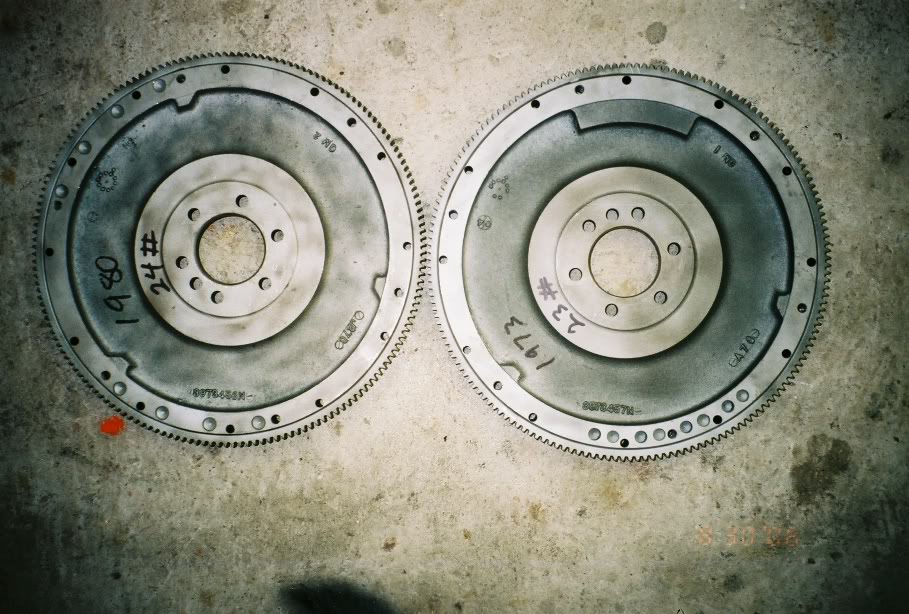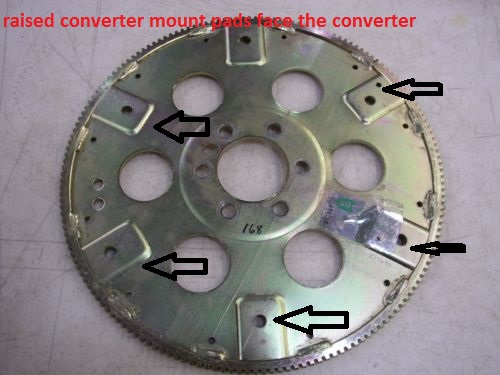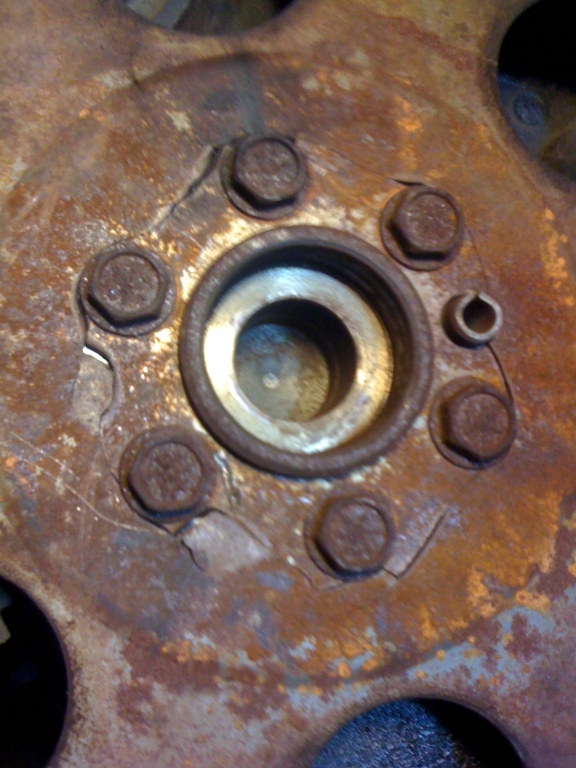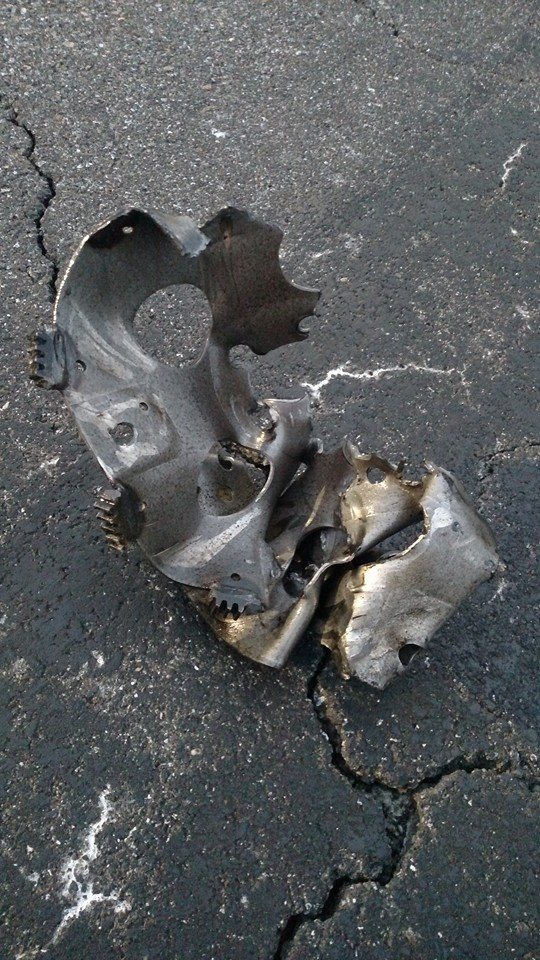the stock flex-plate is a 153 tooth internally balanced design, the 168 tooth flex plate WILL clear the stock bell housing and work but you'll need a different starter and in most cases headers and other clearance issues will restrict your choices to the high torque mini starters, most 400 sbc require a externally balanced flex plate and matching externally balance damper or balancer, in many cases it a larger diam,. and that can cause clearance issues with the front K-frame in some cases
viewtopic.php?f=70&t=458&p=2911&hilit=+mini+starter#p2911
viewtopic.php?f=70&t=458&p=1545&hilit=starters#p1545
http://www.atiracing.com/products/flexp ... xplate.htm
http://www.carcraft.com/techarticles/cc ... ewall.html
http://www.gmpartsdirect.com/performanc ... D=913.html
keep in mind theres 3 and 6 bolt torque converters and several bolt pattern diameters
the spline counts and shaft diameters differ in various applications so do the required research
EXAMPLE
10.750 in.
11.500 in.
OEM flex plates are far thinner and more flexible than the SFI certified flex-plates , so they are far more likely to crack and split over time
.the raised side of the indentations go TOWARD the converter , in the picture above the crank flange mating side faces away from you
Instructions
1
Determine which side of the flexplate goes against the crankshaft. Looking at the center of the flexplate, where the bolts go, one side is recessed. This side faces away from the crankshaft.
2
Clean the mounting flange on the crankshaft and the mounting area of the flexplate with parts cleaner and a shop rag.
Sponsored Links
Fiber Glass Developments
Find Quality Composite Materials. Shop Fibre Glast Products Today!
http://www.fibreglast.com
3
Mount the flexplate on the crankshaft with the recessed part facing away from the crankshaft. Line up the mounting holes. You will be able to see that the flexplate is flush against the crankshaft by looking at the mounting holes.
4
Install the bolts by hand until finger tight. You must use the special flexplate bolts. These bolts have a special shoulder and a thin head. If you try to use regular bolts, the torque converter will not fit properly; the flexplate will not be held against the crankshaft properly. Damage will ensue.
5
Stick a large flat-head screwdriver through one of the slots toward the outside of the flexplate. The end of the screwdriver should rest against the engine block. This position will keep it from moving when you torque the bolts.
6
Use a torque wrench and socket to torque the bolts to the factory specification for your specific engine and transmission. Torque the bolts in a crisscross pattern, similar to how you would tighten lug nuts.



